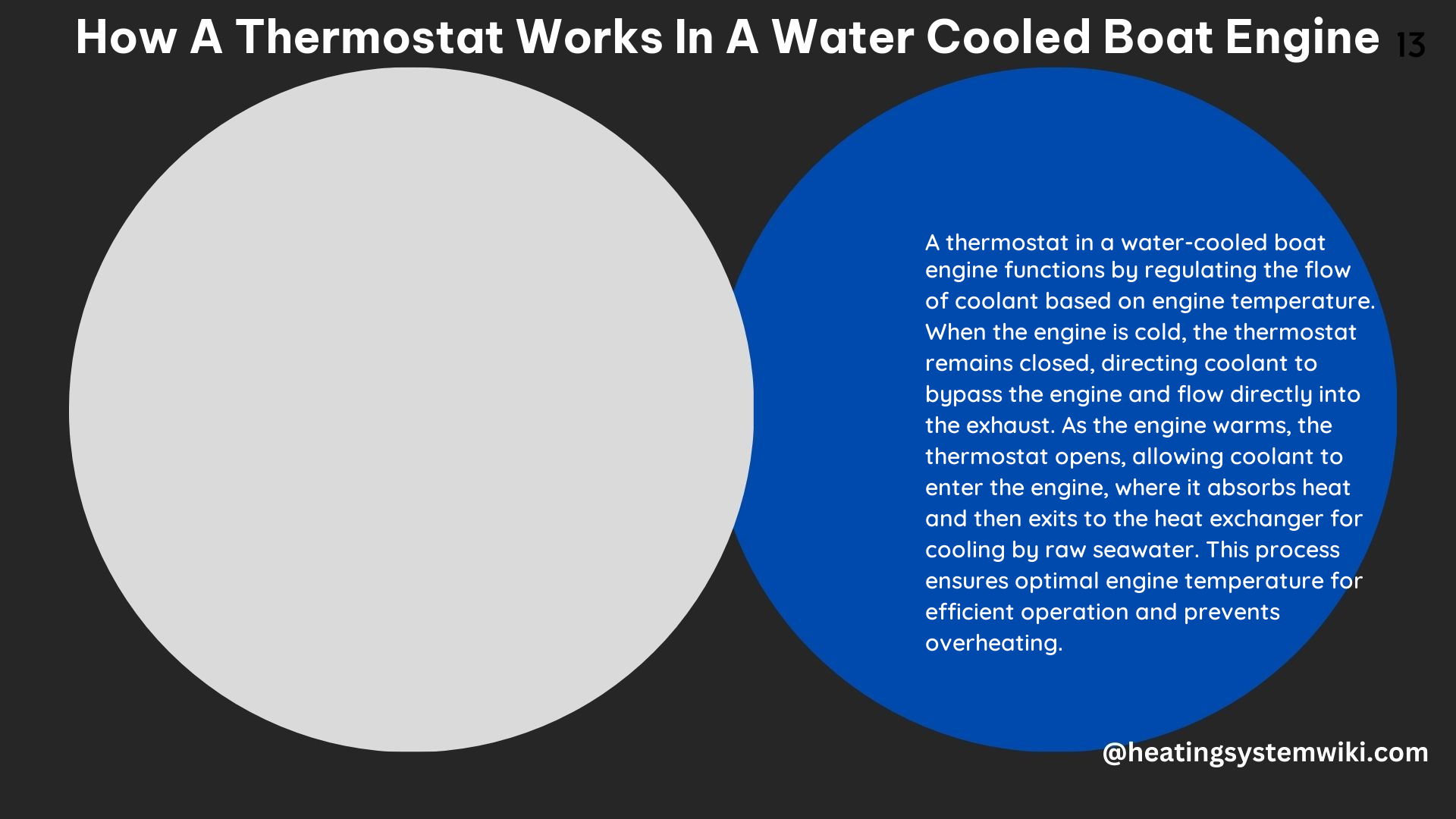A thermostat in a water-cooled boat engine plays a crucial role in regulating the temperature of the engine. It is typically located in the engine’s cooling system, often near the exhaust elbow. The thermostat is designed to open and close in response to the temperature of the engine coolant.
Understanding the Thermostat’s Function
When the engine is cold, the thermostat remains closed, allowing coolant to bypass the engine and flow directly into the exhaust. This helps the engine reach its optimal operating temperature quickly, improving fuel efficiency and reducing wear on engine components.
As the engine warms up, the thermostat opens, allowing coolant to flow into the engine, where it absorbs heat. The heated coolant then exits the engine, passing through the exhaust elbow and out of the boat. This continuous circulation of coolant helps maintain the engine’s operating temperature within a specific range, typically around 75°C-85°C.
Importance of Maintaining the Optimal Temperature

The thermostat’s primary function is to maintain the engine’s operating temperature within this optimal range. This helps ensure optimal engine performance and longevity. By controlling the flow of coolant into the engine, the thermostat helps prevent the engine from overheating or operating at temperatures that are too low, which could lead to inefficient combustion and increased wear and tear on engine components.
Thermostat Operation in Raw Water-Cooled Engines
In a raw water-cooled engine, the thermostat is still essential for regulating the engine’s temperature. However, it is important to note that raw water cooling systems can be more susceptible to corrosion and fouling than closed-loop freshwater cooling systems. This is because raw water contains impurities and contaminants that can build up inside the engine, potentially leading to blockages and reduced cooling efficiency over time.
Maintaining the Raw Water Cooling System
Therefore, it is crucial to maintain the raw water cooling system and regularly check the thermostat’s operation to ensure that the engine is running at the correct temperature. This includes:
- Regularly checking the raw water intake and exhaust for blockages or debris that could restrict the flow of water.
- Regularly inspecting the sea strainer and cleaning or replacing it as necessary.
- Monitoring the thermostat’s operation to ensure it is functioning correctly.
Technical Specifications
Here are the key technical specifications of a thermostat in a water-cooled boat engine:
| Specification | Value |
|---|---|
| Typical Location | Near the exhaust elbow |
| Thermostat Design | Opens and closes in response to coolant temperature |
| Closed Thermostat | Allows coolant to bypass the engine and flow directly into the exhaust |
| Open Thermostat | Allows coolant to flow into the engine, where it absorbs heat and exits through the exhaust elbow |
| Optimal Engine Operating Temperature Range | 75°C-85°C |
DIY Maintenance Tips
Here are some DIY tips for maintaining the thermostat and the water cooling system in a boat engine:
- Regularly check the thermostat’s operation to ensure that it is functioning correctly.
- If the engine is running too hot or too cold, the thermostat may need to be replaced.
- When replacing the thermostat, make sure to use a thermostat that is rated for the correct temperature range for your engine.
- Regularly maintain the raw water cooling system to prevent corrosion and fouling.
- Check the raw water intake and exhaust for blockages or debris that could restrict the flow of water.
- Regularly inspect the sea strainer and clean or replace it as necessary.
By understanding how a thermostat works in a water-cooled boat engine and following these maintenance tips, you can help ensure that your engine operates at the optimal temperature, improving performance and longevity.
References:
– Why have a thermostat on a raw water cooled engine?
– How exactly does Merc seawater cooling system work?
– Boat Engine Cooling System Maintenance
